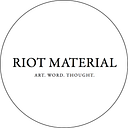Robert Pruitt: Devotion
at California African American Museum, Los Angeles (through February 17, 2019)
Reviewed by Ellen C. Caldwell
Robert Pruitt: Devotion is Houston-born and New York-based Robert Pruitt’s first major museum exhibit in Los Angeles, and it is a must-see and muse-experience. California African American Museum (CAAM) features Devotion in a large interior room, with plenty of light and room for a show with large-scale charcoal works on paper, paintings, sculptures, and installations.
As the title suggests, the room feels religious in nature — in the way that people are quietly and respectfully moving from one work to another; in the way that people seem in awe of both the art, the artifice, and the artifacts surrounding them; and in the way that the work is speaking to people individually, poetically, and more largely in a community sense. Devotion is an experience that CAAM’s Visual Arts Curator Mar Hollingsworth has curated beautifully and masterfully.
There is an air of quiet as visitors circumambulate the space, a movement itself reserved for the ritual nature of a religious follower circling a temple or sacred object. A light call of music seeps out quietly and distinctly from one of the installations and lends to the sacred mood and aura of the show. Moving from piece to piece, viewers observe, see, feel, read, and then move on to the next piece to start this repetitive ritual another time over.
Pruitt chose works from CAAM’s permanent collection to exhibit alongside his own work. These included artistic influences ranging from precolonial African art to works by John Biggers and Charles White. These works are gems amidst Pruitt’s own diamonds. Many of Pruitt’s works and others he chose to include referred to head pieces of some sort, including masks, like the Yoruba Gelede headdress; hats, like the black Malcolm X baseball hat that sits aglow atop a blue LED light in Thinking Cap (2008); and wigs like the Joyokalon wig worn by Ella Fitzgerald from the 1960s. As the wall label for Fitzgerald’s wig explains, “Like hats, wigs are headpieces that draw attention to their bearers and can be markers of their power or talent. In his own work, Pruitt emphasizes the importance of the head as a channel for receiving spiritual energy, a concept common in African art.”
These are indeed all power(ful) objects. As if capturing or nurturing the potent brain power of its wearer, these seemingly mundane objects become symbolically charged. In focusing on them, Pruitt elevates both the object and the unpictured wearer. They are at once sacred icons and accessories to greatness.
Some of Pruitt’s sculptures are readymades of sorts, including a work called Africa Then, named after the book entitled Africa Then, by Nicolas Monti. The book hovers on a shelf ten feet above the viewer. It is in fact so high that a viewer could not possibly see its contents, but it is as if its very presence looms largely above and beyond us. The publisher’s synopsis for the book describes it as “Excerpts from the letters, diaries, and journals of European travelers accompany photos of Africa before and during the changes caused by contact with the West.” With works like this and the aluminum foil-wrapped wooden Male Figure and Female Figure (2011), and the Gelede headdress, Pruitt draws connections to pre- and post-colonial Africa. Through them, he references the consuming colonial narrative (here, one that quite literally hovers above us) that continues to shape history and historiography, making his show a contemporary exploration of the African diaspora of the past, present, and future — both within and outside of CAAM and Los Angeles’ own African American community and artworld.
In one of the more immersive installations called Rearview Mirror (2018), viewers sit on a bench, beneath a spherical hanging speaker and before a dark, seemingly black painting. From the bench’s position, you are inundated with music made in collaboration with composer J▵WW▵▵D.
As you look and listen, you begin to tune out the people in the gallery around you and tune into the work before you. Slowly, you begin to notice a small sliver of white appear towards the center of the black void of the painting. As you do, you realize that you are in fact watching Earth recede into the distance, perhaps as you yourself are traveling beyond, far and away.
This is an amazingly jarring experience within the museum’s walls. Through sight, sense, and sound, Pruitt is able to pull you out of the grounded wooden floors and onto an intergalactic journey. . .
To read the rest of this review, go to Riot Material magazine: https://www.riotmaterial.com/robert-pruitt-devotion%EF%BB%BF/
And please follow us on Facebook: https://www.facebook.com/riotmaterial/
